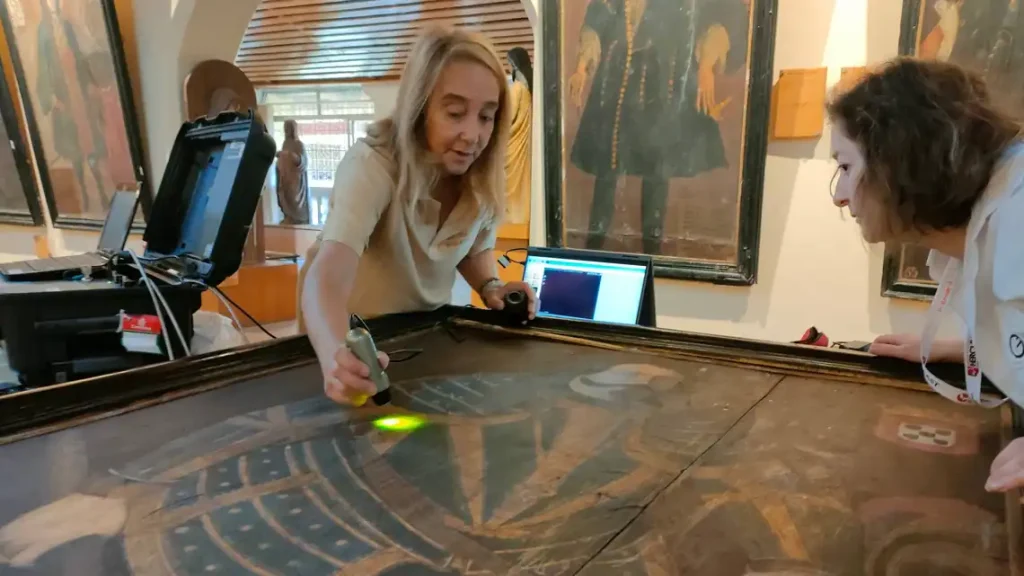The Viceroys’ and Governors’ Portrait Gallery in Old Goa, housed within the former Convent of the Church of St. Francis of Assisi, has long been overlooked by tourists visiting the region. However, a team of dedicated art historians and experts is now shedding light on the hidden stories within the collection. The Archaeological Museum and Portrait Gallery of Goa, managed by the Archaeological Survey of India (ASI), displays a collection of 120 paintings and a photograph showcasing Goa’s rulers from the 1500s to the late 1950s, including notable figures like Vasco da Gama.

While most visitors see the collection as a series of faces from Goa’s colonial past, recent restoration efforts have revealed intriguing discoveries. Through the Old Goa Revelations Project, a collaborative endeavour between the ASI and Portuguese art historians, advanced non-invasive technology is being employed to analyse the paintings. These revelations are changing our understanding of the artwork, suggesting that some portraits may have been created by local Goan artists, while others have been altered to maintain political balance. Over the centuries, several paintings have been repainted, over-painted, or even resized for various reasons.
The Old Goa Revelations Project commenced in 2011, initially focusing on three portraits located in Portugal. Since 2019, the team has expanded their study to include the paintings within the gallery in Goa. The collection spans the 451 years of Portuguese rule in India until Goa’s integration into the Indian Union in 1961. The ASI assumed possession of the portraits in 1964.
Dr. Kishore Raghubans, Assistant Superintending Archaeologist at the ASI, oversees the museum and explains that around 66 paintings are on display, while the remainder are kept in reserve and rotated periodically. The project’s first phase involved training ten ASI officials from the science branch to handle and preserve the portraits effectively. Nineteen portraits were studied during the initial phase, followed by an examination of 32 additional artworks. Future phases of the project will delve deeper into the investigation of paintings from the 16th and 17th centuries.
The collaboration between the ASI and Portuguese art historians demonstrates a commitment to uncovering the hidden narratives and artistic nuances within the Viceroys’ and Governors’ Portrait Gallery. By utilising state-of-the-art technology, the team is able to delve beneath the surface layers of paint, revealing the secrets and alterations that have shaped these artworks over time. These discoveries challenge our understanding of the collection, offering new perspectives on Goa’s colonial history and the artistic contributions of local Goan artists.
The ongoing efforts of the Old Goa Revelations Project serve as a testament to the importance of preserving and studying historical artworks. By peeling back the layers of paint, art historians are able to illuminate the stories and complexities that lie within these portraits. The project not only enriches our understanding of Goa’s colonial past but also highlights the significance of interdisciplinary collaboration and technological advancements in the field of art restoration and preservation.
As the team continues to uncover hidden details and untold stories within the Viceroys’ and Governors’ Portrait Gallery, the appreciation and understanding of these artworks as valuable historical artifacts are being reimagined. The project brings renewed attention to the overlooked museum, inviting visitors to delve beyond the surface and explore the fascinating world concealed within the layers of paint.
Feature Image: Teresa Caldeira and Teresa Reis scan the surface of a painting at the Archaeological Museum and Portrait Gallery of Goa with a digital microscope Courtesy: ASI

Contributor





